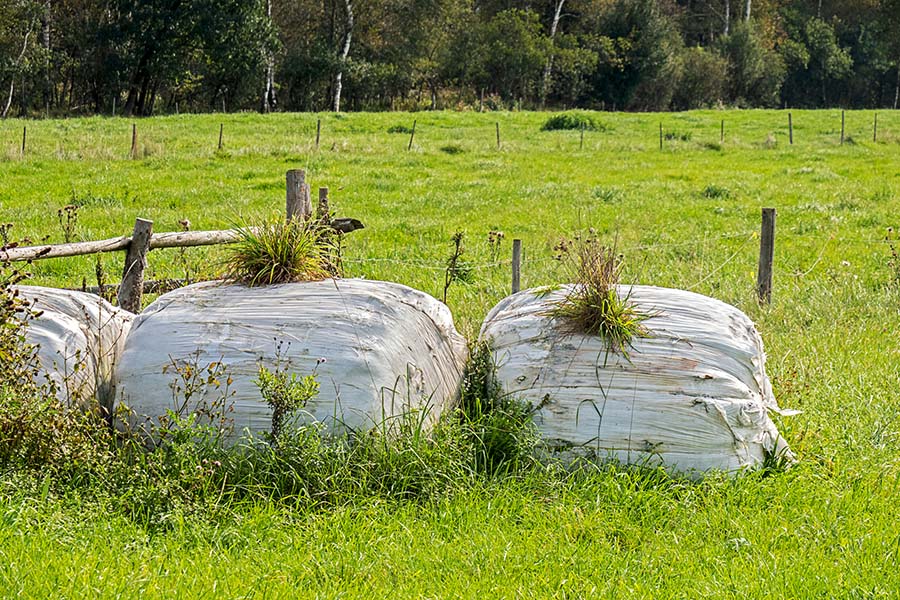Investing in Longevity: Getting the Most Out of Your Silage Cover
A high-quality silage cover helps protect your feed and maximizes its value. But like any valuable asset, it needs care to ensure it lasts. Think of it like a well-maintained home: a well maintained cover will keep your feed safe and sound for years to come.
Silage cover management isn’t rocket science, but it involves more than just tossing a tarp over your pile and calling it a day. It requires diligence to spot problems early on and fix issues before they turn into silage-spoiling disasters. By following a few simple strategies, you can extend the life of your cover, reduce waste, and ensure your silage remains protected from whatever Mother Nature throws its way.
This article will provide practical tips and tricks for keeping your silage covers in tip-top shape, from cleaning and storage to inspection and repair. It’ll also discuss how to prevent damage, spot signs of wear and tear, and recognize when it’s time to replace your cover.
Cleaning and Storage: Preserving Your Cover’s Potential
Careful cleaning and storage extends the life of your cover and keeps it in optimal condition for future use. Plus, it’ll last longer, perform better, and save money in the long run.
Cleaning: Soap, Water, and a Little Bit of Elbow Grease
After each use, give your silage cover a good scrub-down to remove dirt, debris, and lingering silage residue, preventing the buildup of unwanted microbes and keeping your cover in top condition.
Your cleaning routine should start with removing loose debris, such as leaves, sticks, or silage particles, using a broom or brush. Next, wash the cover with a mild detergent and water. For stubborn dirt, use a scrub brush or pressure washer (but avoid using harsh chemicals or abrasive cleaners that could damage the material). Finally, rinse the cover thoroughly with clean water to remove all traces of detergent and residue.
While cleaning, take a close look at the cover for signs of damage, like tears, punctures, or seam separation. Mark any areas that need repair.
Air Drying
Before storing your cover, make sure it’s completely dry. This prevents mold and mildew growth, which can weaken the material and create unpleasant odors. Air drying is best. Hang it over a fence or lay it flat in a well-ventilated area. Avoid additional exposure to direct sunlight, as those UV rays can add up.
Storage: Safe and Secure
Proper storage protects your silage cover from damage and extends its lifespan. Fold it neatly, avoiding sharp creases that could weaken the material. Some covers have designated folding lines or instructions for proper folding, so check those out.
Store the cover in a clean, dry, and rodent-free area, away from sharp objects and chemicals. Avoid storing covers directly on the ground or in areas exposed to moisture or extreme temperatures. For extra protection, consider using a storage container or bags.
Bonus Tips
If you find any damage during cleaning, repair it before storing the cover. This keeps damage from spreading so the cover is ready for use when the next season starts.
Label the cover with the date of cleaning and any relevant information, such as the silo it was used for or any repairs that were made.
Keep an inventory of your silage covers, including their size, type, purchase date, and condition. This helps you stay organized and plan for replacements.
Inspection and Repair: A Checkup for Your Cover
Regular checkups aren’t just for humans and tractors! Your silage covers need them too. Think of it as a mission to catch potential problems before they turn into silage-spoiling headaches.
When to Inspect
Before you even lay your cover on a fresh silage pile, give it a thorough once-over. Look for any damage that might have happened during storage.
Keep an eye on your cover throughout the season, especially after heavy rain, strong winds, or any activity that could cause damage.
Once the silage is used up, inspect it again before cleaning and storing it for future use.
What to Look For
Tears and Punctures: Check for rips, tears, or punctures in the cover. These can be caused by sharp objects, critters, or machinery.
Seam Separation: Inspect the seams for any signs of separation or weakness.
UV Degradation: Look for fading, brittleness, or cracking, all signs that the sun’s been wreaking quiet havoc.
General Wear and Tear: Keep an eye out for thinning material, abrasion, or discoloration.
Weighting and Anchoring: Weights should be correctly distributed and secured. Watch for signs of shifting or displacement.
Repair: A Stitch in Time
If you find any damage during an inspection, don’t panic! Most issues can be quickly and easily repaired. Refer to Article 10 in this series for a detailed guide on how to fix leaks and tears, including patching techniques and when to consider a professional repair. A little maintenance now can save you a lot of trouble down the road.
Preventing Damage: An Ounce of Prevention...
You know the saying, “An ounce of prevention is worth a pound of cure.” Well, it applies to silage covers too! Here are a few simple steps to keep your cover in top shape:
- No roughhousing! Handle the cover with care during deployment, removal, and storage. Avoid dragging it across rough surfaces or folding it sharply.
- Think of good weighting as a warm hug for your silage pile, Use enough weight and distribute it evenly to prevent wind uplift and keep it snug.
- Curious critters can wreak havoc on a silage cover. Take steps to keep them away, whether fencing, netting, or a creative deterrent.
- Regular cleaning and proper storage help prevent deterioration and keep it in top shape for years of service.
Knowing When to Replace
Even with the best care, silage covers don’t last forever. Here are a few signs it might be time for a replacement:
- If your cover has seen better days and the damage is beyond repair (or the repair costs more than a new cover), it’s time to say goodbye.
- If your cover is showing signs of severe UV damage, like widespread brittleness or cracking, it’s time to retire it.
If your cover is no longer doing its job, even with repairs and maintenance, it’s time for a new one.




